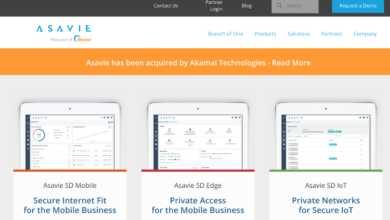
5 Tips to Stand Out With Little Cyber Experience
5 Tips to Stand Out When You Have Little or No Cyber Experience: So, you’re eyeing a career in cybersecurity but feel a little…under-qualified? Don’t worry, you’re not alone! Many successful cybersecurity professionals didn’t start with a degree in the field. This post is your secret weapon, revealing five surprisingly effective strategies to make your application shine, even if your cyber experience is limited.
Get ready to turn your perceived weaknesses into strengths!
This isn’t about faking it till you make it; it’s about showcasing your potential. We’ll explore how to highlight transferable skills from other areas, demonstrate genuine enthusiasm, leverage online communities, build a compelling portfolio, and strategically target entry-level opportunities. Each tip is designed to help you present yourself as a highly motivated and capable candidate, ready to learn and contribute.
Highlight Transferable Skills
Breaking into cybersecurity without prior experience can feel daunting, but don’t despair! Many skills from other fields translate surprisingly well into this dynamic industry. By effectively showcasing these transferable skills, you can significantly boost your candidacy and prove your potential to employers. This involves understanding which skills are valuable, articulating them clearly on your resume, and confidently demonstrating them during interviews.Many skills learned in seemingly unrelated fields are highly valued in cybersecurity.
Analytical thinking, problem-solving, and attention to detail are just a few examples. Even seemingly soft skills like communication and teamwork are crucial in collaborative cybersecurity environments. The key lies in effectively highlighting these skills and framing them within the context of cybersecurity roles.
Transferable Skills and Cybersecurity Equivalents
The following table illustrates how skills from diverse backgrounds can be reframed to demonstrate cybersecurity relevance. Remember to tailor this to your specific experience and the job description.
| Skill from Other Field | Cybersecurity Equivalent | Example | How to Showcase |
|---|---|---|---|
| Problem-solving (e.g., from engineering or customer service) | Incident response, vulnerability analysis | Successfully troubleshooting complex technical issues in a previous role, leading to efficient resolution. | Quantify your successes using metrics (e.g., reduced downtime, improved efficiency). |
| Attention to detail (e.g., from accounting or research) | Log analysis, penetration testing | Successfully identified and corrected numerous minor errors in a large dataset, preventing significant problems. | Highlight your accuracy and meticulousness in tasks requiring precision. |
| Analytical skills (e.g., from data analysis or finance) | Security auditing, threat intelligence | Developed and implemented data analysis techniques that identified patterns and trends, leading to informed decision-making. | Demonstrate your ability to interpret complex data and draw meaningful conclusions. |
| Communication skills (from any field involving teamwork or client interaction) | Security awareness training, incident reporting | Effectively communicated complex technical information to non-technical audiences. | Provide examples of your ability to explain technical concepts clearly and concisely. |
Resume and Interview Strategies
Effectively communicating your transferable skills requires a strategic approach to both your resume and interviews. On your resume, use action verbs and quantify your achievements whenever possible. For instance, instead of saying “Responsible for data entry,” say “Improved data entry accuracy by 15% through the implementation of a new process.” In interviews, be prepared to provide specific examples that demonstrate how your skills translate to cybersecurity scenarios.
Practice using the STAR method (Situation, Task, Action, Result) to structure your answers and showcase your accomplishments. By showcasing concrete examples, you can effectively demonstrate your potential to succeed in a cybersecurity role.
Showcase Enthusiasm and a Strong Learning Aptitude
Landing a cybersecurity role without prior experience can feel like climbing Mount Everest in flip-flops. But don’t despair! Genuine enthusiasm and a demonstrable eagerness to learn are powerful assets that can outweigh a lack of formal experience. Employers are looking for individuals who are passionate about the field and willing to put in the effort to acquire the necessary skills.
Showing them you fit that bill is key.Demonstrating a genuine interest in cybersecurity goes beyond simply stating your passion. It requires concrete actions that prove your commitment. This isn’t about faking it till you make it; it’s about actively engaging with the field and showcasing your dedication through tangible efforts. Think of it as building a compelling case for your suitability, highlighting not just your potential but your proactive approach to learning.
Cybersecurity Learning Initiatives
Actively pursuing knowledge in cybersecurity is crucial. This isn’t just about passively reading articles; it’s about actively participating in your learning journey. Consider enrolling in online courses on platforms like Coursera, edX, or Cybrary. These platforms offer a wide range of cybersecurity courses, from introductory-level topics to more specialized areas. Supplement this with hands-on projects to solidify your understanding.
Building a personal portfolio of projects demonstrates practical application of learned concepts and shows initiative. The more you actively engage, the more credible your enthusiasm becomes. For example, completing a course on ethical hacking and then applying that knowledge to a personal project showcasing vulnerability assessment skills significantly strengthens your application.
Personal Project: Network Security Simulation
For my personal project, I simulated a small office network using VirtualBox and several virtual machines. I configured different operating systems and network services, intentionally introducing vulnerabilities like open ports and weak passwords. Then, I used tools like Nmap and Wireshark to scan for these vulnerabilities and document my findings. Finally, I created a report detailing the vulnerabilities discovered, the potential impact of each, and recommended mitigation strategies.
So, you’re aiming to stand out in the tech world despite limited cyber experience? That’s awesome! Focus on building a strong portfolio, showcasing projects even if small, and actively networking. Learning a low-code platform like those discussed in this insightful article on domino app dev the low code and pro code future can quickly boost your skills.
Remember, consistent learning and a proactive approach are key to making your mark, even as a beginner. This strategy will help you overcome the initial hurdle of lacking experience.
This project allowed me to apply the knowledge gained from online courses in a practical setting, demonstrating my ability to identify and address security risks. The process involved problem-solving, meticulous documentation, and a systematic approach to vulnerability assessment—all highly valued skills in cybersecurity. The final report, which I can readily share, serves as a concrete example of my capabilities and dedication.
It’s not just about the technical skills; it’s about the process, the analytical thinking, and the problem-solving approach I employed.
Emphasize Networking and Community Involvement: 5 Tips To Stand Out When You Have Little Or No Cyber Experience
Breaking into cybersecurity without prior experience can feel daunting, but actively engaging with the cybersecurity community is a powerful way to build your credibility and learn from experts. It’s about more than just passively consuming information; it’s about actively participating and demonstrating your commitment to the field. This involvement shows potential employers your passion and dedication, supplementing your lack of formal experience with practical engagement and demonstrable enthusiasm.Participating in online cybersecurity communities and attending industry events, even virtually, provides invaluable opportunities for learning, networking, and showcasing your skills.
These platforms offer a rich environment to learn from seasoned professionals, build relationships, and gain exposure to real-world challenges and solutions. This active engagement significantly boosts your profile and demonstrates your proactive approach to learning and career development.
Online Cybersecurity Communities and Their Benefits
The online cybersecurity landscape is teeming with vibrant communities where you can connect with professionals, learn from their experiences, and contribute your own insights. These platforms provide a low-pressure environment to ask questions, participate in discussions, and even showcase your skills through contributions to open-source projects. Consistent participation helps build your reputation and demonstrates your commitment to the field.
- Cybersecurity Stack Exchange: This Q&A site allows you to ask questions, answer others’ queries, and earn reputation points based on the quality of your contributions. This demonstrates problem-solving skills and a willingness to learn.
- Discord Servers dedicated to Cybersecurity: Many specialized Discord servers offer channels for discussions, tutorials, and networking opportunities. Engaging in these communities provides exposure to a diverse range of topics and perspectives, fostering a deeper understanding of the field.
- Reddit Communities (r/cybersecurity, r/netsec): These subreddits offer a platform for discussions, news sharing, and seeking advice. Participating in discussions, sharing insightful articles, and offering helpful answers establishes your presence and demonstrates your knowledge.
Benefits of Attending Cybersecurity Events and Webinars
Attending cybersecurity events, whether in-person or virtual, offers unparalleled networking opportunities and exposes you to the latest industry trends and technologies. These events provide a chance to connect with professionals, learn from experts, and potentially discover mentorship opportunities. Even virtual events offer valuable interactions through Q&A sessions and online networking features.Attending webinars, for example, can provide focused learning on specific cybersecurity topics.
Many reputable organizations and companies offer free or paid webinars covering various areas, from ethical hacking to incident response. Actively participating in Q&A sessions and engaging with presenters showcases your interest and willingness to learn. The knowledge gained can be directly applied to your personal projects or used as talking points during job interviews, demonstrating your proactive approach to professional development.
Build a Portfolio of Small Projects

Landing a cybersecurity job with limited experience can feel daunting, but building a portfolio of small projects is a game-changer. It demonstrates your practical skills and initiative, far outweighing the lack of formal experience on a resume. These projects don’t need to be massive undertakings; even small, focused efforts showcase your abilities effectively.Think of your portfolio as a living document – a testament to your growing skills and dedication.
Each project adds another layer to your professional identity, showcasing your capabilities to potential employers. Don’t be afraid to start small; the key is to demonstrate your understanding and application of cybersecurity principles.
Three Small-Scale Cybersecurity Projects, 5 tips to stand out when you have little or no cyber experience
These projects offer a great starting point for building your portfolio, requiring minimal specialized tools or extensive prior knowledge. Each focuses on a different area of cybersecurity, providing a well-rounded demonstration of your skills.
- Network Security Analysis: Analyze the security posture of a small, simulated network. This could involve identifying vulnerabilities in a basic network configuration using freely available virtual machines and tools like Nmap (for port scanning) and Wireshark (for packet analysis). Document your findings and propose mitigation strategies.
- Password Security Assessment: Create a presentation or short report on the importance of strong passwords and password management practices. This could involve researching different password cracking techniques, comparing various password managers, and outlining best practices for password creation and storage. You can even create a simple password strength checker as a small coding project.
- Website Security Audit: Perform a basic security audit on a publicly available website (ensure you have permission if necessary). This could involve identifying potential vulnerabilities such as outdated software, insecure configurations, or missing security headers. Document your findings in a report, outlining the potential risks and suggesting improvements.
Detailed Steps for a Network Security Analysis Project
This project involves setting up a small virtual network, scanning it for vulnerabilities, and documenting your findings.
- Setup: Use VirtualBox or VMware to create two or three virtual machines representing different network devices (e.g., a server, a workstation, and a router). Configure basic networking between these VMs.
- Scanning: Use Nmap to scan the network for open ports and services. Document the results, noting any potentially vulnerable ports or services.
- Analysis: Research the identified vulnerabilities. Determine the potential impact of each vulnerability and the likelihood of exploitation.
- Mitigation: Propose specific mitigation strategies for each identified vulnerability. This might involve updating software, closing unnecessary ports, or implementing firewalls.
- Documentation: Create a well-organized report detailing your methodology, findings, and proposed mitigation strategies. Include screenshots and relevant data.
Visual Representation of the Network Security Analysis Project
Imagine a flowchart. The starting point is the virtual network setup (two or three boxes representing the VMs, connected by lines representing network connections). Arrows then lead to the Nmap scan, represented by a box showing the command and output (a list of open ports). Another arrow leads to a box labeled “Vulnerability Analysis,” which branches out to smaller boxes detailing each identified vulnerability and its potential impact.
Finally, an arrow points to a concluding box labeled “Mitigation Strategies” which shows a list of proposed solutions. The overall visual is clear, concise, and effectively communicates the project’s structure and outcome. The flowchart clearly shows the progression from network setup to vulnerability identification and finally to proposed solutions, demonstrating a systematic approach to network security analysis.
Target Entry-Level Roles and Internships

Breaking into the cybersecurity field without extensive experience can feel daunting, but focusing your efforts on entry-level roles and internships is a smart strategy. These opportunities provide invaluable hands-on experience and a foot in the door. Understanding the differences between these two paths and strategically applying for them is crucial for your success.Entry-level cybersecurity roles and internships offer distinct advantages, each contributing to a different stage of your career development.
While both provide practical experience, entry-level positions generally offer more responsibility and compensation, while internships focus more on learning and skill development within a structured program. Successfully navigating the application process for either requires a tailored approach, highlighting relevant skills and demonstrating a strong commitment to the field.
Entry-Level Cybersecurity Roles vs. Internships
Entry-level roles, such as Security Analyst or Junior Penetration Tester, typically require some foundational knowledge and often a relevant degree or certification. These positions involve real-world responsibilities and contribute directly to an organization’s security posture. Internships, conversely, are more focused on training and skill development. Interns often assist senior staff, work on smaller projects, and gain exposure to various aspects of cybersecurity.
While internships might not offer the same level of responsibility or compensation, they provide a structured learning environment and valuable networking opportunities. The choice between the two depends on your individual circumstances, experience level, and career goals. A well-structured internship can often serve as a stepping stone to a full-time entry-level position within the same organization.
Resources for Finding Entry-Level Positions and Internships
Numerous online resources can assist your job search. LinkedIn remains a powerful tool for networking and discovering open positions. Cybersecurity-specific job boards, such as Cybersecurity Ventures and Dice, often list entry-level roles and internships. Company websites, particularly those of larger technology firms and cybersecurity companies, are another excellent source. Don’t overlook university career services; many universities have dedicated resources and connections to help students and alumni find jobs in the cybersecurity field.
Finally, attending industry conferences and networking events can lead to unexpected opportunities.
Sample Cover Letter for a Cybersecurity Internship
To Whom It May Concern,
I am writing to express my keen interest in the Cybersecurity Internship at [Company Name], as advertised on [Platform]. Having followed [Company Name]’s work in [Specific area of company’s work] for some time, I am deeply impressed by your commitment to [Company value or achievement].
While my formal experience in cybersecurity is limited, my background in [Previous field] has equipped me with highly transferable skills. My experience in [Specific task or project] honed my analytical skills and attention to detail, crucial for identifying and mitigating security threats. Furthermore, my proficiency in [Relevant skills, e.g., scripting, problem-solving] aligns perfectly with the requirements of this internship. I am a quick learner, eager to contribute to your team, and confident in my ability to quickly grasp new concepts and technologies.
My enthusiasm for cybersecurity stems from [Explain your interest – personal anecdote or specific event]. I am particularly interested in [Specific area of cybersecurity within the company]. I am actively pursuing [Certifications or further education] to further enhance my knowledge and skills in this field.
Thank you for your time and consideration. I have attached my resume for your review and welcome the opportunity to discuss my application further.
Sincerely,
[Your Name]
Last Recap

Landing your dream cybersecurity role without extensive prior experience is absolutely achievable. By strategically highlighting your transferable skills, showcasing your learning agility, actively networking, building a portfolio of small projects, and targeting entry-level positions, you’ll significantly boost your chances of success. Remember, passion and a willingness to learn are invaluable assets in this ever-evolving field. So go out there, show them what you’ve got, and watch your cybersecurity career take off!
Quick FAQs
What if I have no relevant coursework?
Focus on personal projects and online courses to demonstrate your initiative and learning ability. Mention any relevant certifications you’ve pursued.
How important is a cybersecurity degree?
While helpful, it’s not always essential. Experience, skills, and a demonstrable passion often outweigh formal education, especially for entry-level roles.
What kind of small projects can I do?
Consider setting up a home network, learning basic penetration testing techniques (ethically!), or contributing to open-source security projects.
Are internships really that valuable?
Yes! Internships provide practical experience, networking opportunities, and a strong boost to your resume, significantly increasing your chances of landing a full-time role.





